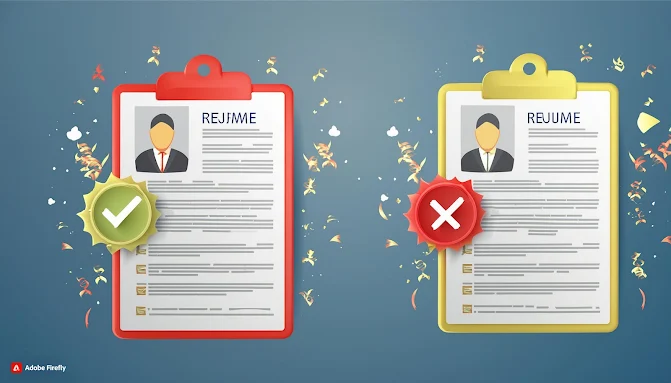Craft a Resume That Gets You Noticed: A Guide for American Job Seekers
Struggling to land interviews? You're not alone. Many job seekers find their resumes buried in a pile, overlooked by potential employers. But a compelling resume can be your key to unlocking exciting career opportunities.
In this guide, we'll unveil the secrets of writing a resume that grabs attention and gets you noticed by hiring managers.
Tailoring Your Resume: The Key to Standing Out (How to write a compelling resume that stands out to employers?)
Ever feel like your resume goes into a black hole? The problem might be a one-size-fits-all approach.
The best resumes are tailored to each specific job you apply for. This means highlighting the skills and experiences most relevant to the position. By showcasing a strong match between your qualifications and the employer's needs, your resume becomes impossible to ignore.
Here's how to tailor your resume effectively:
- Read the job description closely. Identify the required skills, experience, and keywords mentioned.
- Craft a targeted summary or objective statement. Briefly introduce yourself and explain why you're the ideal candidate, using keywords from the job description.
- Focus on relevant achievements in your work history. Don't just list your duties; use action verbs to describe accomplishments that demonstrate the skills and experience the employer seeks.
Building Your Resume: Step-by-Step (How do I write a compelling resume?)
Now, let's dive into the building blocks of a strong resume.
1. Contact Information:
- Include your full name, professional email address, and phone number.
- Ensure your email address sounds professional (avoid nicknames or cutesy terms).
- Consider adding a link to your LinkedIn profile (optional).
2. Summary or Objective Statement:
- A summary is ideal for experienced professionals, highlighting your career goals and most relevant skills.
- An objective statement works well for career changers or recent graduates, focusing on transferable skills and desired career paths.
- Keep it concise; 2-3 sentences are ideal.
3. Work Experience:
- Sort your positions by the last date in reverse chronological order.
- Add your job title, company name, and employment dates.
- To prove your impact, use strong action verbs and quantifiable achievements.
- Pay attention to the qualifications and experiences listed in the job description.
Here's an example:
- Increased website traffic by 20% through SEO optimization strategies (relevant for a marketing role).
- Streamlined the onboarding process, reducing training time by 30% (relevant for an HR role).
4. Skills:
- List relevant skills and tools you are proficient in.
- Include a mix of hard skills (technical skills) and soft skills (interpersonal skills).
- Tailor the skills section based on the job description.
5. Education:
- List your educational background, including the name of the institution, degree earned, and graduation year.
- Include relevant coursework or academic achievements (if applicable).
6. Additional Sections (Optional):
- Volunteer experience
- Awards and recognitions
- Professional certifications
- Languages spoken
Remember:
- Keep it concise. Aim for a 1-2 page resume, depending on your experience level.
- Proofread meticulously for typos and grammatical errors.
Formatting for Success (How to write a compelling resume that gets noticed by Applicant Tracking Systems (ATS)?)
Applicant Tracking Systems (ATS) are frequently used by hiring managers for resume screening. Here's how to format your resume to be ATS-friendly:
- Make use of a straightforward, readable format with bullet points and distinct headings.
- Avoid fancy fonts or graphics that might not translate well through ATS.
- Utilize the job description's keywords throughout your CV.
Beyond the Basics: Making Your Resume Shine (How to write a compelling resume with strong achievements?)
A strong resume goes beyond the bare necessities. Here are some additional tips:
- Quantify your achievements: Numbers grab attention. Use numbers to demonstrate the impact of your work whenever possible. (e.g., "Increased sales by 15%")
- Use action verbs: Replace generic verbs like "responsible for" with strong action verbs that showcase your skills and initiative. (e.g., "Developed," "Managed," "Spearheaded")
- Carefully proofread: Grammatical mistakes and typos provide a bad impression. Before sending your CV, make sure it is well proofread.
Conclusion: Craft Your Pathway to Success
By following these steps and tailoring your resume for each job

.jpeg)



.jpg)
.jpg)
.jpg)
